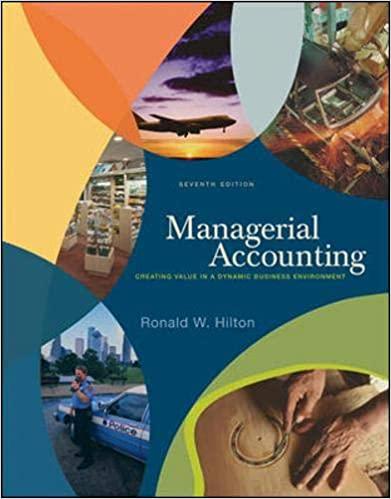The following cost data for the year just ended pertain to Sentiments, Inc., a greeting card manufacturer:
Question:
The following cost data for the year just ended pertain to Sentiments, Inc., a greeting card manufacturer:
Direct material ..................................................................$2,100,000
Advertising expense ............................................................... 99,000
Depreciation on factory building ........................................ 115,000
Direct labor: wages ............................................................... 485,000
Cost of finished goods inventory at year-end ................... 115,000
Indirect labor: wages ........................................................... 140,000
Production supervisor’s salary ............................................. 45,000
Service department costs ................................................... 100,000
Direct labor: fringe benefits .................................................. 95,000
Indirect labor: fringe benefits ............................................... 30,000
Fringe benefits for production supervisor ........................... 9,000
Total overtime premiums paid ............................................ 55,000
Cost of idle time: production employees ........................... 40,000
Administrative costs ........................................................... 150,000
Rental of office space for sales personnel ........................ 15,000
Sales commissions ................................................................. 5,000
Product promotion costs .................................................... 10,000
All services are provided to manufacturing departments.
Cost of idle time is an overhead tern; it is not included in the direct labor wages given above.
The rental of sales space was made necessary when the sales offices were converted to storage space for raw material.
Required:
1. Compute each of the following costs for the year just ended:
(a) Total prime costs.
(b) Total manufacturing overhead costs.
(c) Total conversion costs.
(d) Total product costs.
(e) Total period costs.
2. One of the costs listed above is an opportunity cost. Identify this cost, and explain why it is an opportunity cost.
Step by Step Answer:






